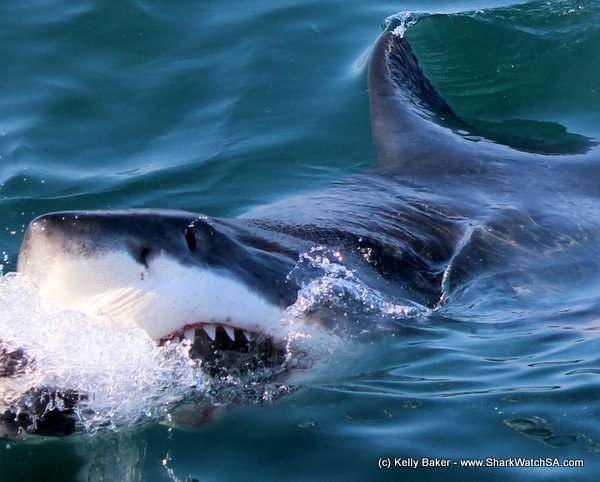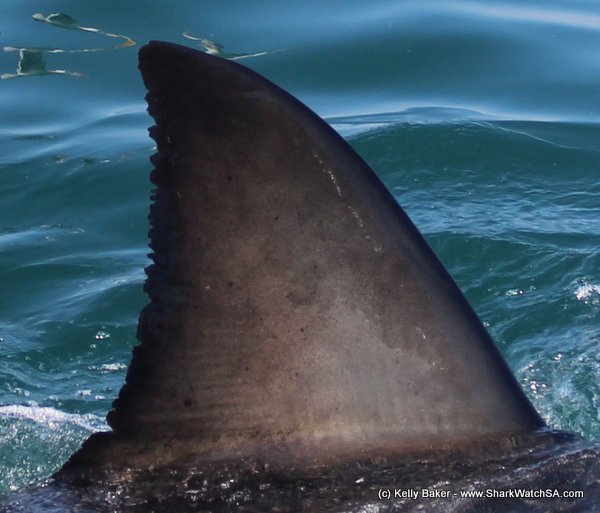Sighted...Lori! One of our acoustically tagged sharks is back in the bay

In the goal to gain knowledge and protect the Great White Shark, Marine Dynamics together with The Dyer Island Conservation Trust, has developed a project in which this species can be acoustically tracked to assess their behaviour. This research, over time, has resulted in a better understanding of the shark’s movements and in turn, usage of the area and their interactions within this marine ecosystem. This project began in 2009 when ‘Sarikia’ a large female Great White shark was tagged and tracked within the shallows, with the use of our research vessel, Lwazi. The procedure involves externally tagging a free swimming shark, usually on the trunk just beneath the dorsal fin. The shark is then manually tracked throughout the bay, using ultrasonic pings from the tag which is recognised by a receiver on the boat.
It is always great to have one of our acoustically tagged sharks visit Slashfin, our shark cage diving vessel, as it so happened on the 11th of August when ‘Lori’, a large female approximately 4.2m in length, was spotted. ‘Lori’ was tagged in November of 2010, and gave the research team week’s worth of tracking and hours of data. This tracking showed a repeated pattern to her movements through the bay, she would spent a few of days in the shallows near the shark cage diving boats before heading off to the southern point of the bay to spent a few days around the kelp forests.
![]()
This individual no longer bears the tag however with a keen eye and close observation you will see a slight mark where it previously sat. The way in which we can identify this shark is with the use of her dorsal fin and its notches and pigmentations, as was the method used to gain the first population estimate of Great White Sharks in this area.
Welcome Back Lori!!
For more information on tagging and tracking a Great White: http://www.dict.org.za/blogs/2012/12/how-to-track-a-great-white-shark-the-dicts-first-mini-documentary/
More information on the method of identification can be found here: http://www.plosone.org/article/info%3Adoi%2F10.1371%2Fjournal.pone.0066035
_1420x587_crop_80.jpg)









